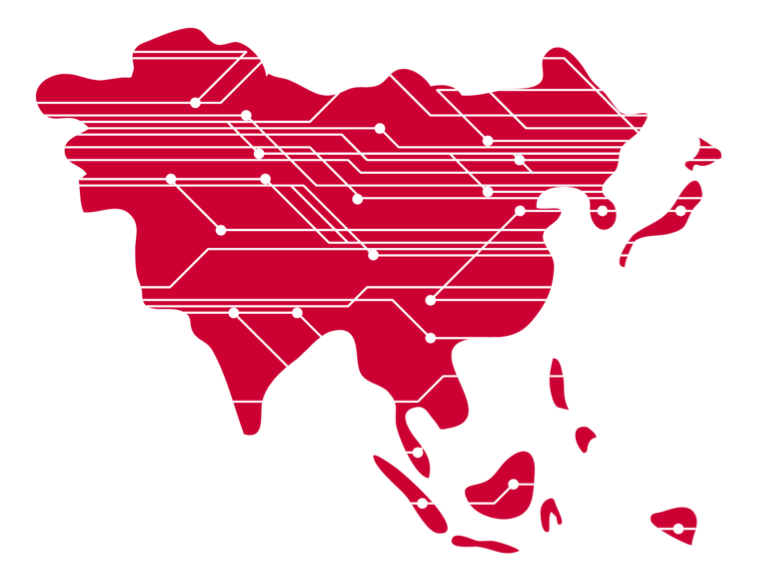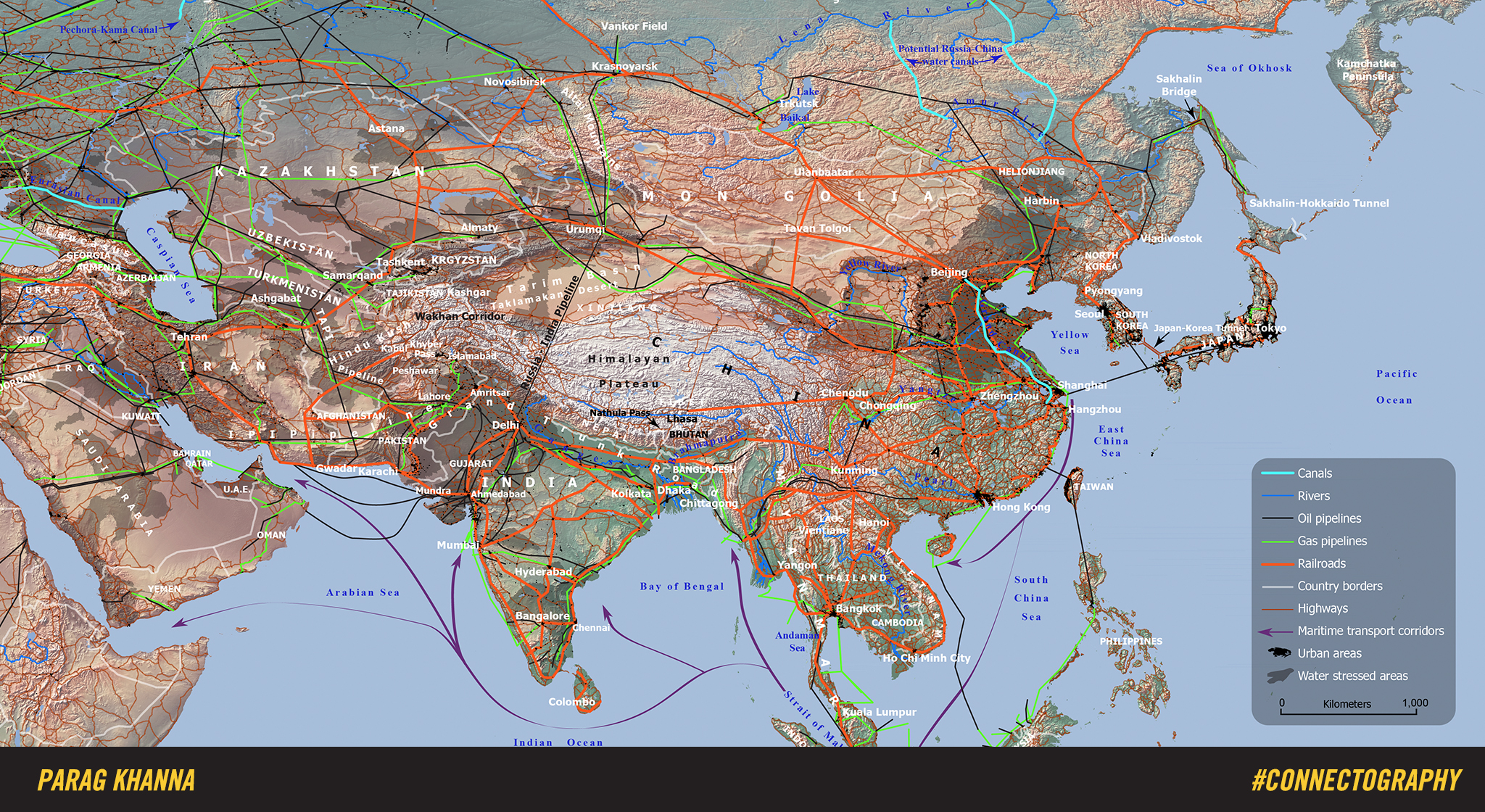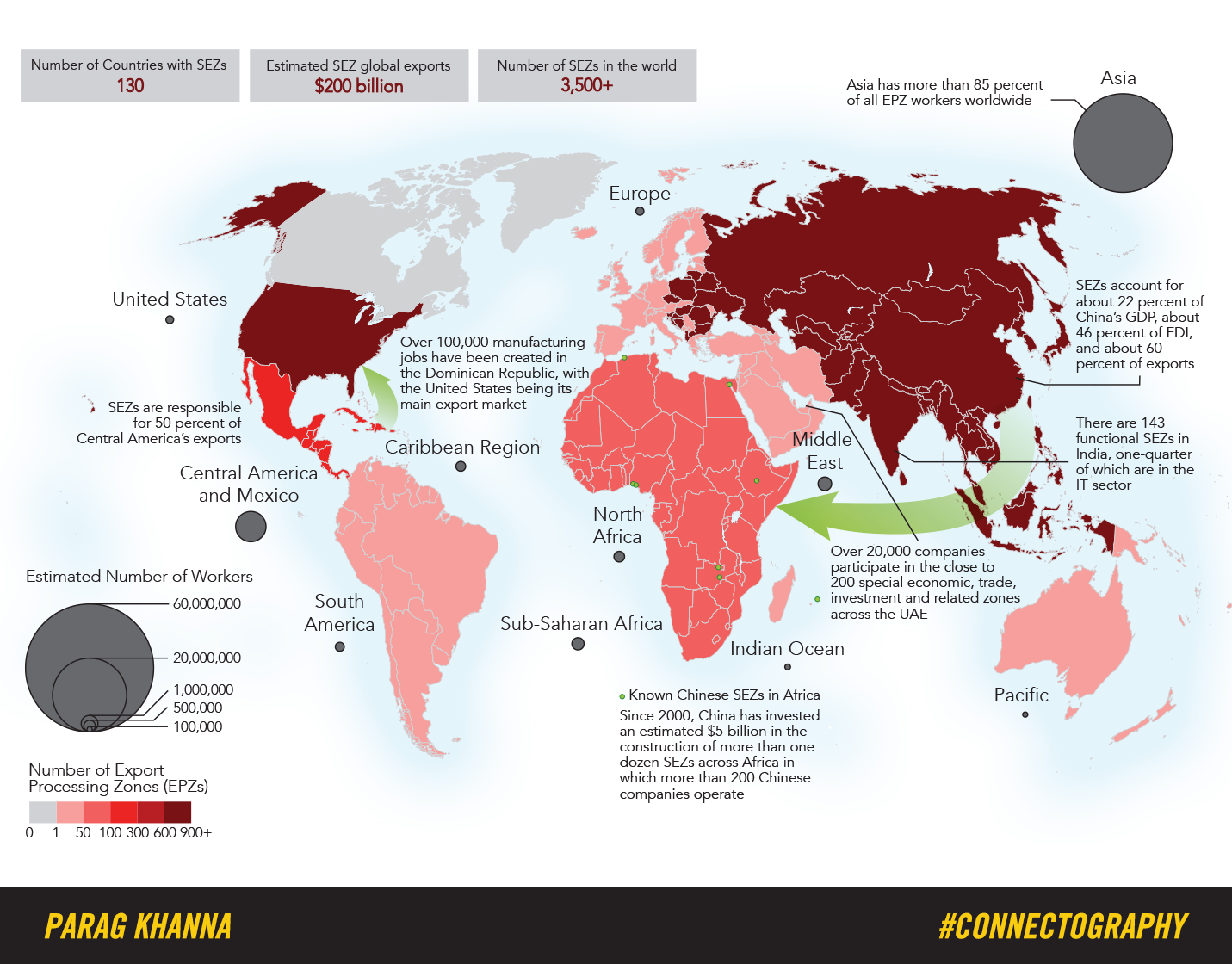Analyse Asia Podcast: “Connectivity is Destiny”
Analyse Asia with Bernard Leong |

Parag Khanna, senior research fellow at the Lee Kuan Yew School of Public Policy, joined us to discuss & launch his latest book “Connectography: Mapping the Future of Global Civilisation” from Asia first. Our conversation began with his new maxim “Connectivity is destiny” over the age old wisdom of “Geography is destiny”. We discussed how the new maps and the drivers of connectivity of the world from the digital economies to infrastructure alliances are changing how we perceive international relations and global logistics supply chain from Asia to US and how new trade routes are building from India to China beyond physical borders. Last but not least, Parag offered what the end state of our world will be after everything is connected.
Here are the interesting show notes and links to the discussion (with time-stamps included):
- Parag Khanna (@paragkhanna, LinkedIn, personal site), Senior Research Fellow in the LKY School of Public Policy, CNN global contributor
- What have Parag been up to since we last spoke (Parag Khanna on episode 53)? [0:50]
- How megacities are changing the map of the world, TED Talk by Parag Khanna in 2016. [1:55]
- Connectography: Mapping the future of global civilization (Amazon, Random House) [2:40]
- Note: A book launch event for Parag’s book on 2pm, 16 April, Kinokuniya Bookstore in Ngee Ann City, Singapore.
- What is the main theme of the book? The idea of “Connectivity is destiny” for the world. [2:50]
- This book is the last of the trilogy Parag have done with your earlier books “The Second World” and “How to run the world”, how are the perspectives of these two books led to this one? [3:50]
- How does the reader navigate the book, i.e. what is the roadmap of the book for the reader? [5:24]
- In simple terms, how is connectivity defined in this book? [8:18]
- What are the drivers to this connectivity? Integrated economies, merging of physical & cyber realities, transportation, feedback loops and infrastructure alliances. [9:34]
- Discussion on integrated economies and the impact of trade zones, for example, ASEAN in Southeast Asia [10:11]
- Multimodal corridors and global supply chains. [11:10]
- Digital Sharing Economies with the new reality of the digital workforce. [11:53]
- Does Wechat and Facebook devolve the boundaries of nations? [13:00]
- Parag elaborates on the new concept and maxim “Connectivity is destiny” that replaces the age old wisdom “Geography is destiny”. [13:40]
- In the old days, the Silk Road (the physical trading route) connected the east and the west, and become an important centre for economic activity, has the digital economies shifted political geography and that country borders do not matter anymore? What’s the substitution from political to functional geography? [15:21]
- The impact of substitution from political to functional geography to legislation. [16:50]
- How is global supply chain changed in this new world? [17:18]
- What are the good and bad that it has contributed to globalisation and connecting the world? [18:12]
- How does one balance between flow and friction with physical geographies and digital spaces? Given technologies are accelerating in such a quick pace, does that mean that we are living in a “change in change” world? [20:10]
- When I glance at the world map, it’s only the zeroth order of what you discussed in the book. Probably, putting how the internet cables, mobile network carriers, supply chain routes for logistics, we understand our world better in the first order. What are the new entities that has to be added to this map in order to have a better map? [21:17]
- Specifically for Asia Pacific, you have argued in the book that devolution is part of the trends in connectography, how does that affect Asian nations and what are China and India’s place in this new world with emerging multi-billion economies powered by smartphones? [22:54]
- How does connectivity change the nature of international wars and tensions? [24:42]
- What is the end state of our world after everything is connected? [25:56]
- What’s the future look for us? [28:50]
Here are two interesting maps from Connectography (Source: Parag Khanna’s personal site):
Eurasia’s New Silk Roads: When we look back at this era from the 22nd century, only one geopolitical story will stand out: The infrastructural integration of Eurasia through the construction of new “iron Silk Roads.

Special Economic Zones: are the most rapidly spreading kind of city, having catapulted exports and growth from Mauritius and the Dominican Republic to Shenzhen and Dubai — and now across Africa.
